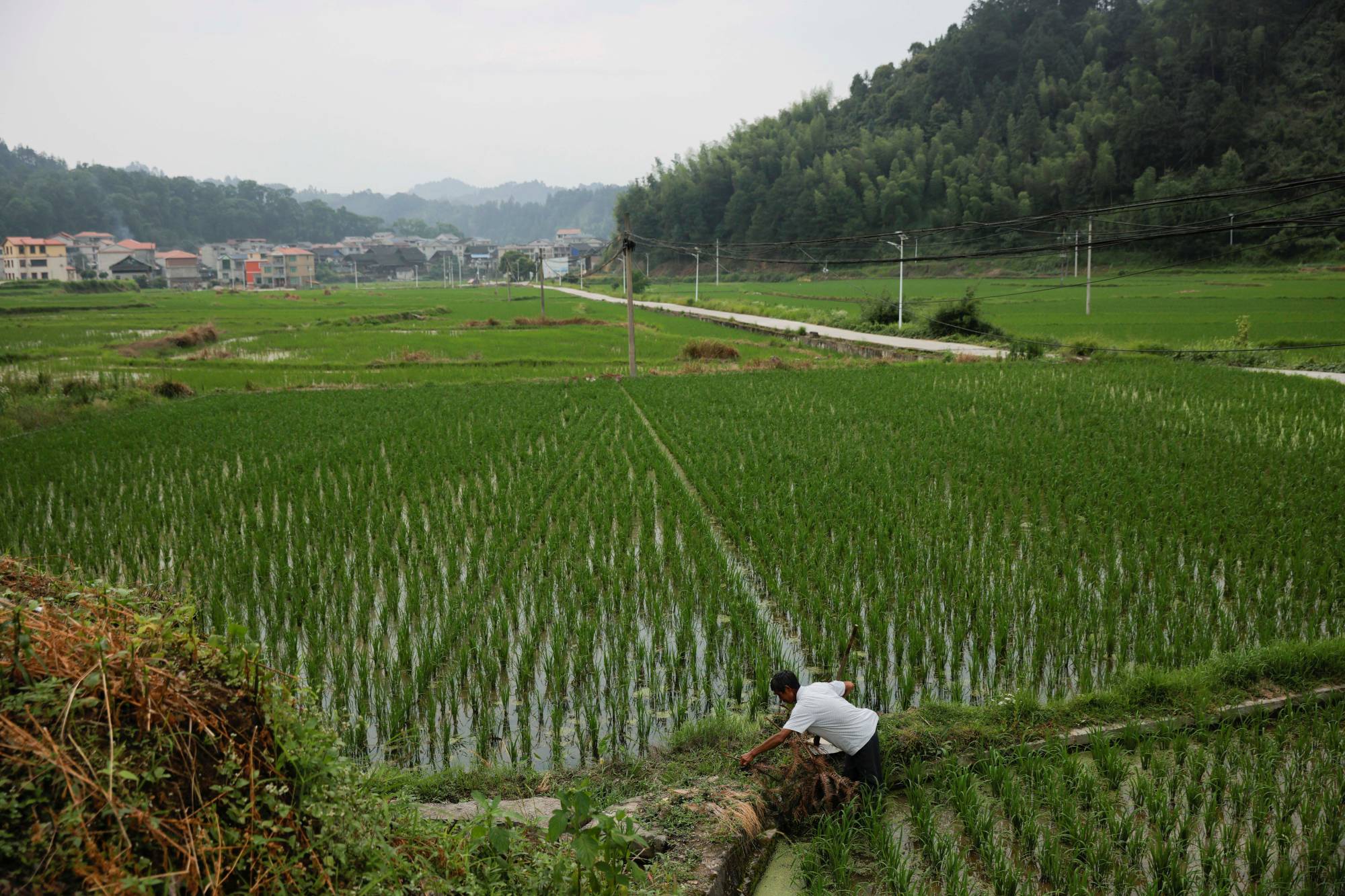It’s the Dragon Boat Festival in early summer and Xiang Yang and his wife are sitting outside their house in Ma’an village, playing with their grandson. In front of them is a steep, bare slope, all that remains of most of the village’s rice fields, which collapsed into the valley 20 years ago. Landslides happen frequently in the region — one last year killed six people — but Xiang has declined a government offer to relocate to the city.
"City people have to pay for water, for vegetables, for electricity, even for using the toilet, but a countryside man like me doesn't need to pay for any of these,” says Xiang, 47, pointing out that it may be hard to find a job at the relocation center. "Whether you’re a villager or a city dweller, you have to travel far away to work as a migrant worker anyway, so what’s the point?”
Xiang’s reluctance to move from one of the hundreds of counties in China that the government says are imperiled by natural disasters, extreme weather or climate change shows the challenge Beijing faces in carrying out the world’s largest state relocation program. Officially called "ecological migration,” it’s designed to depopulate areas for reasons ranging from the cost of providing infrastructure to remote places, to soil degradation from over-farming, or even making way for a new dam (the 1.3 million people evacuated for the Three Gorges Dam’s reservoir were also "ecological migrants.") But increasingly, it’s residents of towns and villages in the north and west who are feeling the brunt of drought, global warming and desertification, that are being asked to move.



